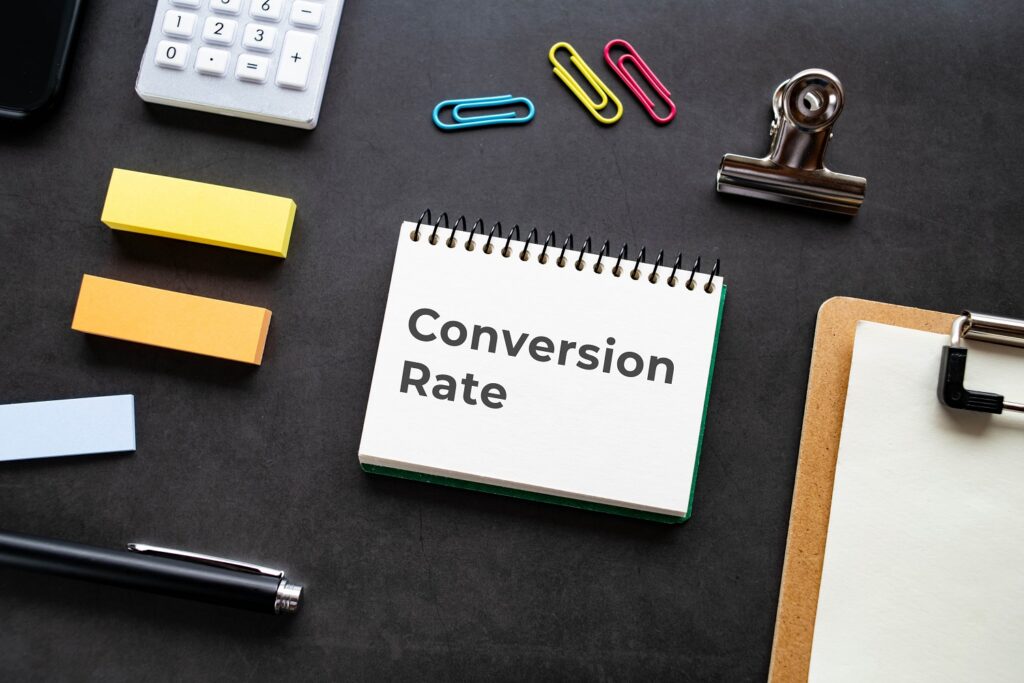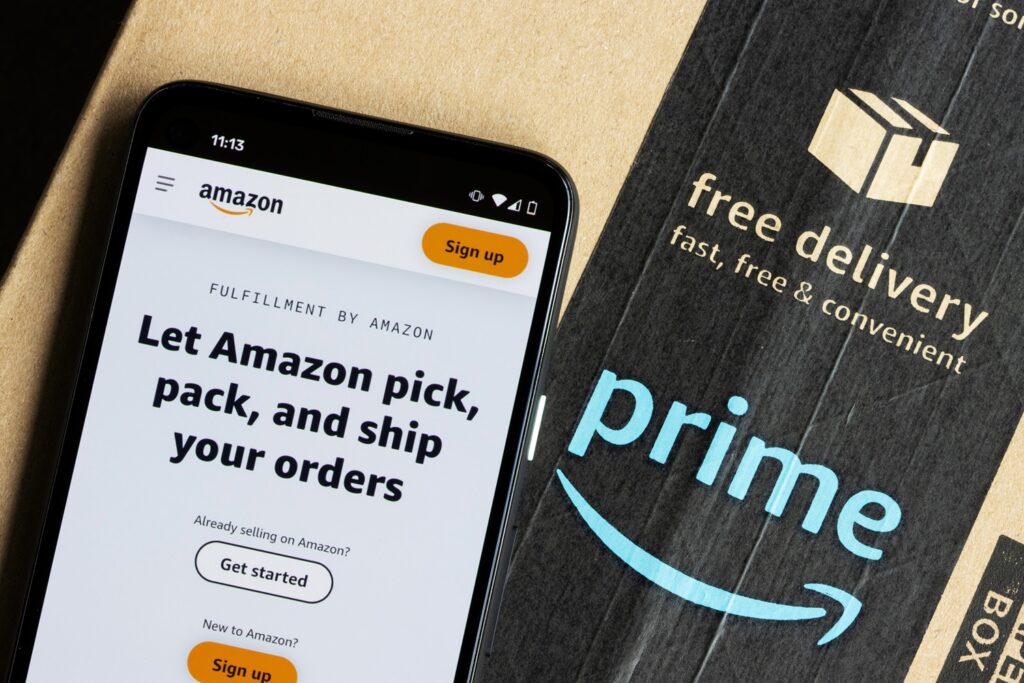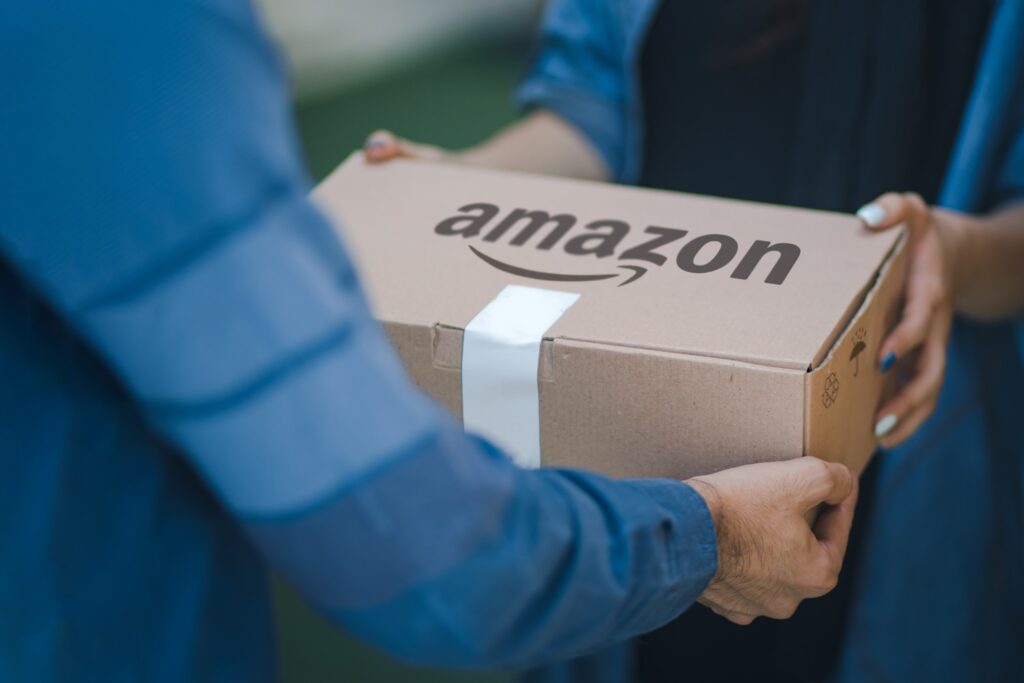SEO For Amazon: How To Rank Highly On Amazon

Becoming a seller on Amazon can be an extremely lucrative opportunity, but it’s also very competitive. That’s why you need to use the right strategies to put yourself ahead of the other products in your category and come out on top. One of the best methods for this is by utilising search engine optimisation (SEO), which ultimately helps you rank better on Amazon results as well as other sites like Google.
However, there’s a lot to know when it comes to SEO. By becoming an expert, you can no doubt become one of the top sellers on the platform. That’s why we’ve put together this comprehensive guide to help you.
Keep reading to discover everything you need to know about SEO for Amazon and how you can come out on top.
Introduction to Amazon SEO
Search engine optimisation for Amazon is key to ranking amongst other sellers in a competitive marketplace. Amazon’s algorithm is not like that of the traditional search engine, as it aims to maximise product discovery and revenue rather than just serving relevant search results. Being skilled at Amazon SEO may be the difference between selling well or floundering in no man’s land.
At its core, Amazon SEO is simply the process of making your product listings more visible to potential customers. Sellers can use tactics like title optimisation, bullet points and backend keywords to get a better position in Amazon search results. As visibility on Amazon equals sales, SEO plays a key role in running a successful e-commerce business.
With so many players in the field, staying up to date with Amazon SEO helps not only make your product discoverable but also increases credibility and chances of conversion, making it possible for sellers to stay ahead in competition by effectively capturing market share.
Understanding Amazon’s search algorithm
Originally implemented in 2003, Amazon’s search algorithm is used for delivering primarily organic results providing the most relevant products based on user input while driving conversions. The earlier model of Amazon takes the keyword relevance along with its sales performance by considering it as an A9 algorithm.
It favoured listings with high click-through rates (CTR) and conversion. An evolution of A9, the newer A10 algorithm seeks to provide more nuanced applications of relevance and performance by introducing customer engagement metrics (such as long-term sales) in addition to traditional on-page elements.
Product ranking on Amazon depends on four key factors:
- Relevance: This entails how the product title, bullet points, and description align with the search query. Keywords are critical here.
- Performance metrics: Sales velocity, conversion rate, and CTR are metrics that Amazon uses to measure product performance. High sales and engagement often push rankings upwards.
- Customer reviews: Having good reviews and ratings improves the credibility of the product and also its visibility.
- How it’s fulfilled: Products fulfilled by Amazon (FBA) often receive better placement due to faster shipping and improved customer satisfaction.
The key relevance-related Amazon ranking factors
As a customer, when you search for a product, you want the relevant results to come up. To ensure your products are coming up in relevant searches, you need to consider the following SEO factors:
Product title
Your product title is one of the keys to Amazon SEO and gives an initial impression for the algorithmic structure, as well as possible buyers. It needs to be clear, descriptive and include the main keywords applicable to the product.
Amazon uses your title in its algorithm to make sense of how relevant your products are for certain search queries, so fill out all the brand/type/size/key feature parts, and you will be more discoverable. A good title will also help the algorithm match your product to relevant searches, and it will attract buyers by telling them what exactly they are looking at
Seller name
While the seller name may not be a direct factor in Amazon’s algorithm, it is immensely important because it influences buyer trust and credibility. A recognisable seller name can help consumers associate high-quality products with your brand and promote it from a customer perspective.
Buyers are more likely to pay attention and make purchases when sellers have established reputations or a positive feedback history. Furthermore, a strong seller name helps you to make your brand known and thus can boost rankings as more sales lead to better visibility. A great seller name can help create a more trustworthy brand image and help you gain visibility for your products.
Brand field
Brand is a big thing in Amazon as this specific field allows sellers to tell Amazon the brand of their product, which helps with categorising in Amazon’s algorithm. Precise and consistent use of the brand field means your product will show up as search results when people perform a full search with that specific filter.
Strong and recognisable brands often enjoy better visibility and credibility, which are usually viewed as indicators of top-notch quality. Not only will the brand field help you show up in more relevant searches, but it can also improve consumer trust and potentially increase your product ranks.
Bullet points and product description
Bullet points and product descriptions are perhaps two of the most important things you could provide when it comes to Amazon SEO, as these give in-depth details on what your product is all about – greatly assisting both the algorithm and a potential user. Write bullet points that clearly mention features, benefits and USPs (and use SEO keywords).
For this type of copy, the product description is edited more like a normal blog post — you can squeeze in the entire narrative (or as much as needed) on what makes that particular product useful or unique. Adding the right keyword into the description while keeping it subtle can add to visibility. Leveraged together, good bullet points and descriptions not only help search rankings by making a listing more keyword-relevant but also increase conversions with good calls to action.
Amazon backend keywords
Back-end keywords are hidden search terms that have a great impact on the product listing and its visibility. You use these keywords to include other searchable terms that customers may be utilising when searching for your product, but do not include them to take up too much space in your viewable content.
This means a wider audience will be able to find your product by using every single piece of available backend real estate to collect keywords effectively. These include synonyms, alternative spellings and similar terms not directly matching the title or description. A well-optimised backend keyword helps boost Amazon’s search relevance, making it discoverable by a wide range of interested customers.

The key performance-related Amazon ranking factors
Compared to the former relevance-related Amazon ranking factors, these ones focus on performance and are there to help a product listing perform well in terms of sales and customer engagement. Here are the ways you can boost your revenue using SEO:
Product price
The product’s price has become the key performance-related aspect of Amazon’s ranking algorithm. Customers often compare the prices of different products before they actually buy it, so competitive pricing can make a huge difference in the visibility and sales of your product. With affordable pricing, you not only attract more customers as a result, but it also leads to better conversion rates.
A competitive price strategy managed and monitored weekly will keep you ranking at the top of your related search category. In addition, using pricing tools and Amazon promotions will strengthen the effectiveness of your price strategy, which attracts consumers while keeping your product competitively positioned in search results.

Amazon conversion rate
The Amazon conversion rate measures the number of people who visited your product page and actually bought it. The conversion rate is a key metric for ranking because the higher this percentage, the more it means that you have used your listing to the fullest to convince visitors to convert to paying customers.
Influences on a conversion rate are product title, description, images, reviews and price. A well-written and compelling creative description, combined with great pricing, helps make the consumer trust you as a seller and increase purchase likelihood. Positive customer reviews and high-quality images also help to increase conversion rates. These elements can be strategically focused on by sellers, which could help boost their product’s ranking and visibility on Amazon.

Product imagery
Once you realise how important product imagery is, it becomes clear that all images are performance factors in the Amazon ranking algorithm. Clear, detailed visuals of the product present an elegant and high-quality image to customers. Well-lit, professional shots from multiple angles inspire more click throughs and conversions. Lifestyle images and infographics that show customers how to use them can be good support, too.
As it appears, Amazon rewards listings favourably with driving engagement and subsequent sales with great imagery or increased search rankings. In short, superior visuals are essential for maximising Amazon visibility and sales performance.
Amazon reviews
Amazon reviews are also a critical ranking factor in product listings. When the trust and credibility are high more customers will then purchase your product or service because you have positive reviews and a five-star rating. If a product receives many good reviews, that feedback is picked up by Amazon’s algorithm and used to rank the product automatically on its predicted reliability.
Conversely, negative reviews may cause sales to drop and reduce rankings. Your product will perform better if you remind happy customers to leave reviews and manage poor feedback quickly. Great customer service and a good product also result in better reviews, which results in your products doing even better in terms of ranking on Amazon.

Utilising Fulfilment by Amazon (FBA)
There are a lot of other advantages to using Amazon for selling as well, such as Fulfilment by Amazon (FBA). Amazon takes care of storage, packaging, and shipping with FBA, ensuring customers have the best experience through fast delivery. Sellers enjoyed a significant decrease in the logistical part of selling their product and can focus on other business aspects.
FBA products are also eligible for Amazon Prime shipping, which makes them an especially attractive option to the roughly 2 billion (yes, that’s a B) shoppers using Amazon as well. FBA also has the added benefit of improved customer service, as Amazon handles the returns and offers 24/7 customer support, which will lead to better ratings and potentially more positive reviews.
Using FBA also increases your SEO on Amazon. FBA products are more likely to feature higher on the search engine, and a Prime-eligible badge is also awarded for these orders. Amazon cares about good conversion rates and customer service from merchants as much as you do, so they use performance metrics like these in their algorithm to rank your store higher than others.
With this increased product visibility and superior performance metrics, a higher ranking ensues, meaning that FBA is an important tactic for sellers keen to boost their Amazon listing sales.

Advanced SEO strategies
Here are a couple more advanced SEO strategies you can consider using to put your Amazon listings even more ahead of the competition:
Sales velocity and conversion rate optimisation
Sales velocity and conversion rate optimisation play a significant role in advanced Amazon SEO strategies. Sales velocity is the number of products sold over a specified period. When a brand earns a good sales velocity, it tells the Amazon algorithm that this product is in demand and customers love it so that they can move you up on search. To increase sales velocity, sellers can utilise tactics including competitive pricing, discounting and running limited promos.
Conversion rate optimisation focuses on increasing the percentage of visitors who make a purchase after viewing a product listing. This can be achieved by improving product listings with clear, compelling titles, high-quality images, detailed descriptions, and positive customer reviews. Additionally, leveraging enhanced brand content like A+ Content and Amazon Stores can provide a more engaging shopping experience, helping to convert more visitors into buyers.
Advertising and promotions
Advertising and promotions are essential for driving traffic and increasing sales on your Amazon account. Utilise Sponsored Product ads, Sponsored Brands and Sponsored Display ads to boost the discoverability of your product. These ads show up in featured placements throughout Amazon, including search results and product detail pages. This ultimately helps to drive an increased reach.
Promotions (e.g., lightning deals, coupons) are one way to instil a bit of urgency and push the purchase timeline lower. By launching targeted deals at key shopping times (holidays and sales events), you can very quickly increase the number of units sold, which has a direct effect on your product ranking.
Conclusion
There’s a lot to keep in mind when it comes to SEO for Amazon, but when you utilise each of the points we’ve mentioned in this guide, you will no doubt increase your chances of success. From increasing the relevance of your product to ensuring it performs well on Amazon search results, there’s a lot you can do to increase your chances of conversion and higher revenue.
For more help, you can partner with Mercatus. We are experts in Amazon selling and can help put together the best SEO strategy to assist you. Contact us today for a free consultation and allow us to take your Amazon store to new heights.


